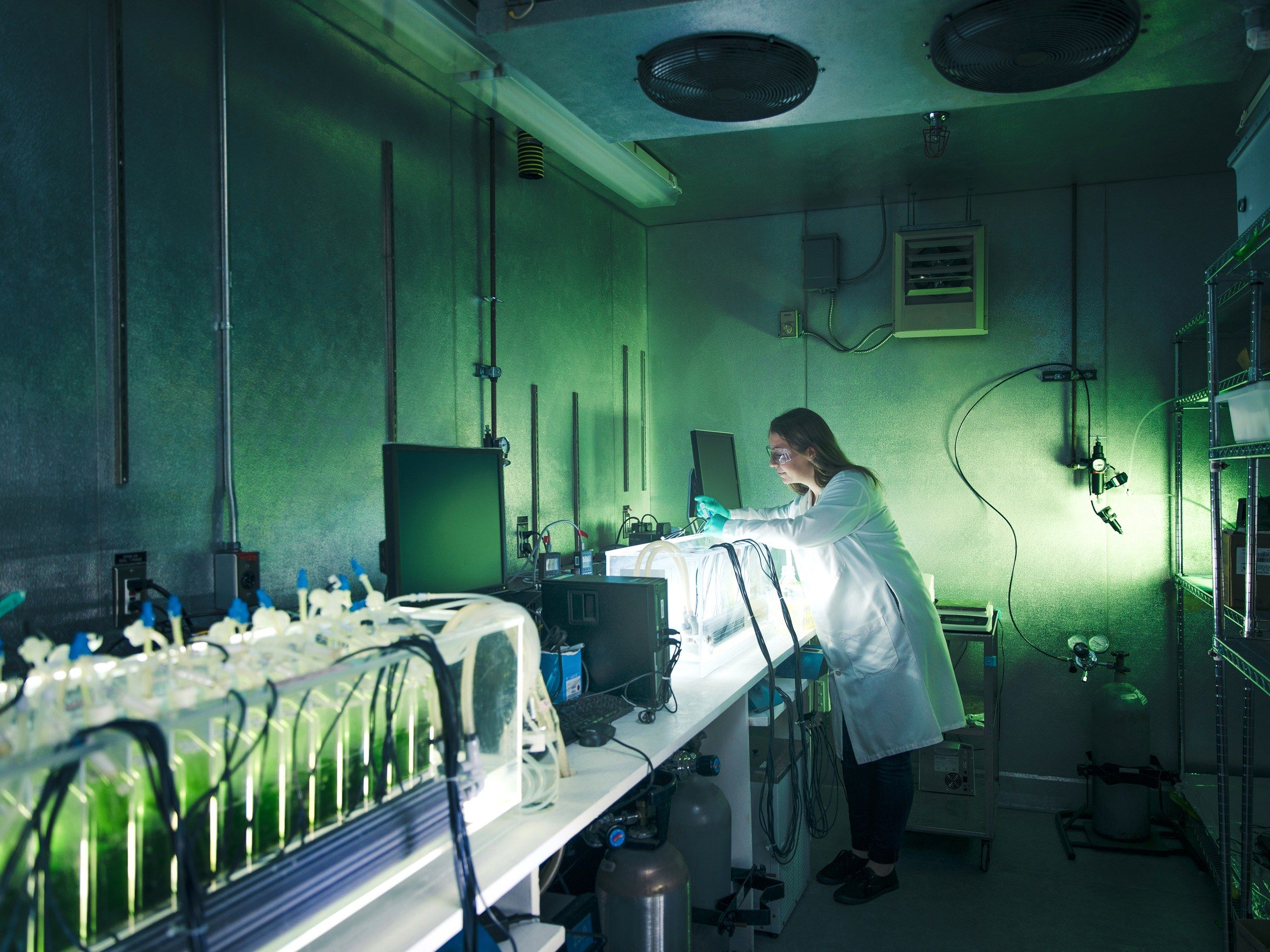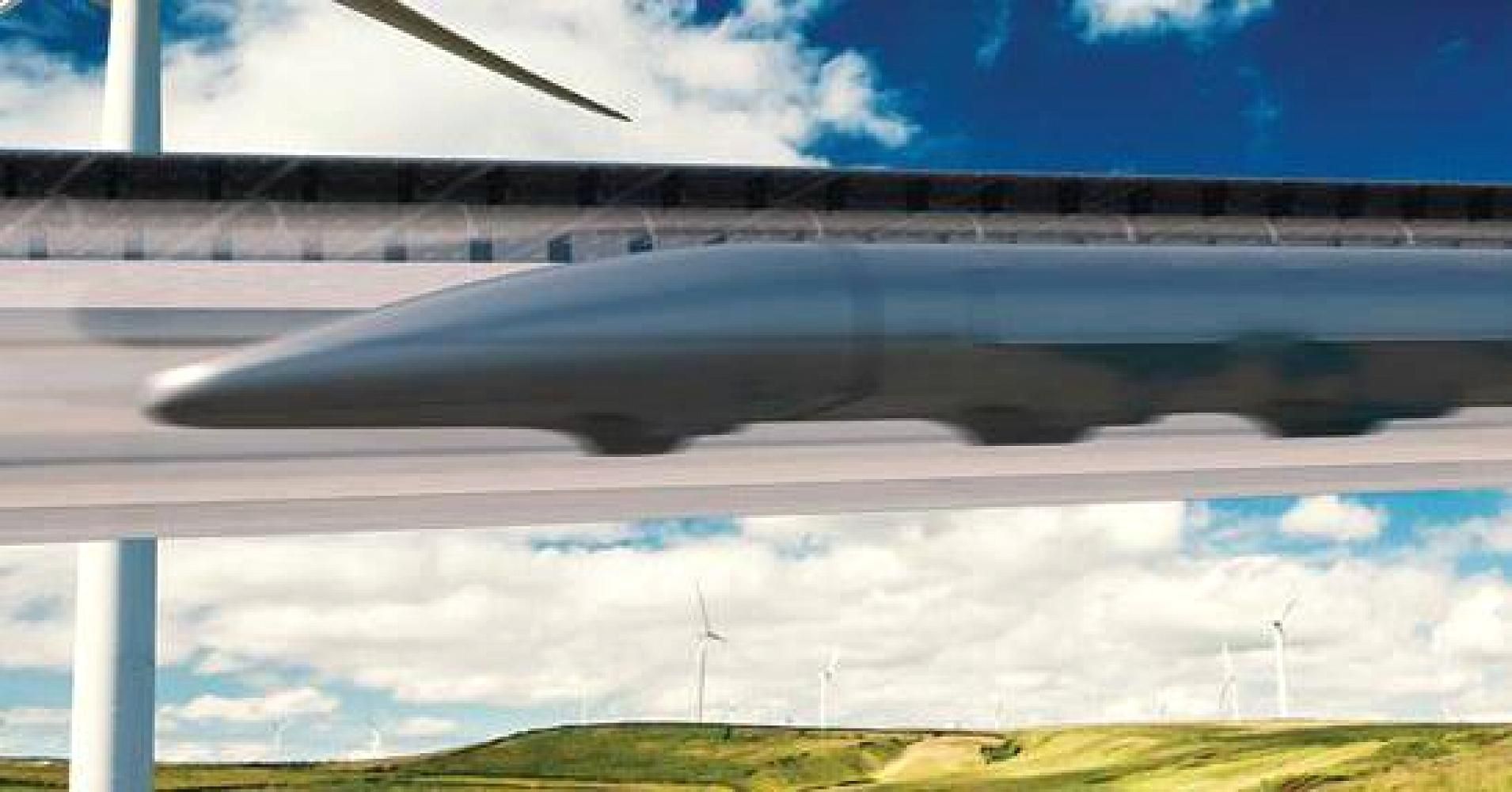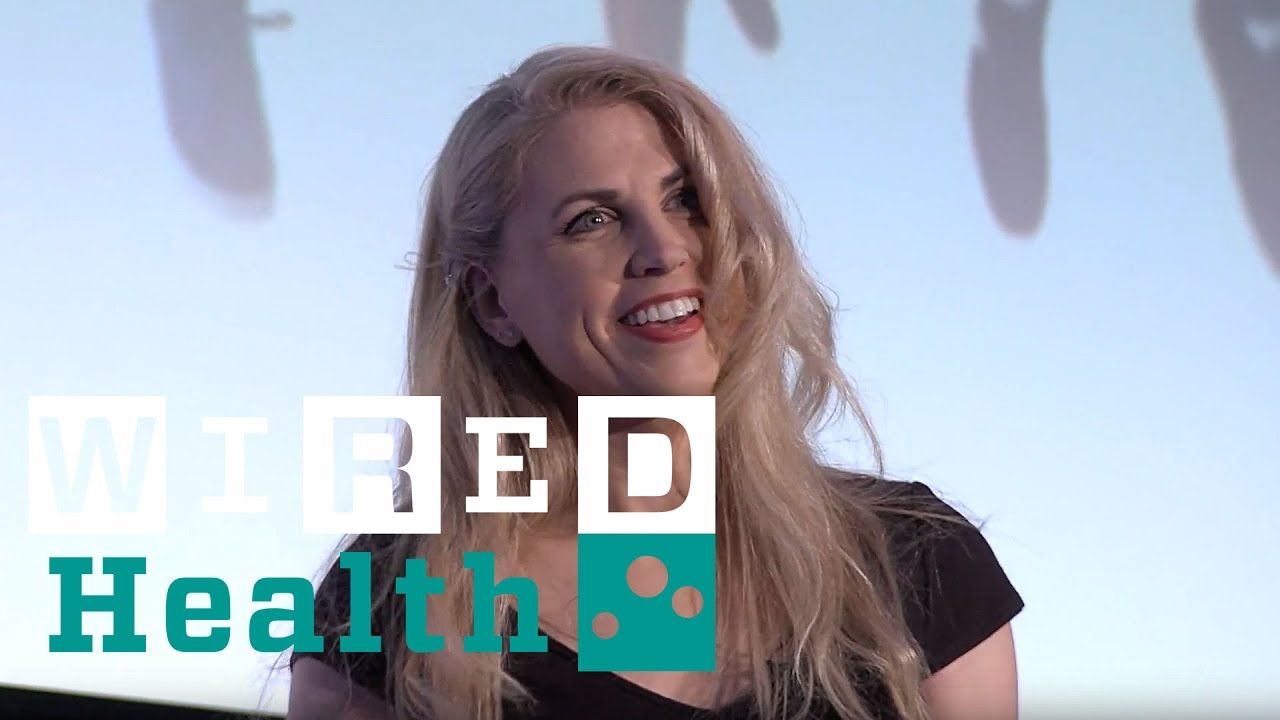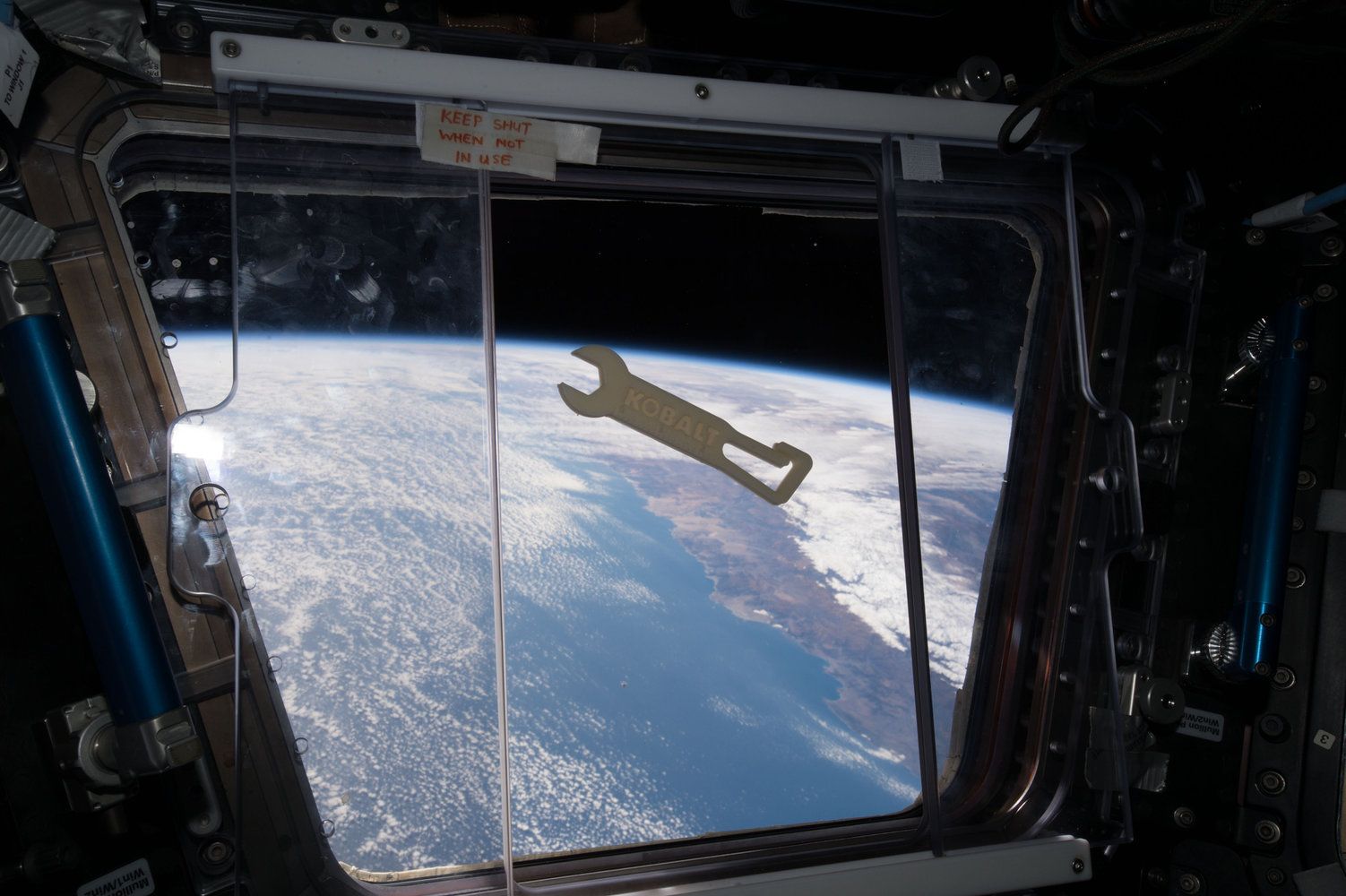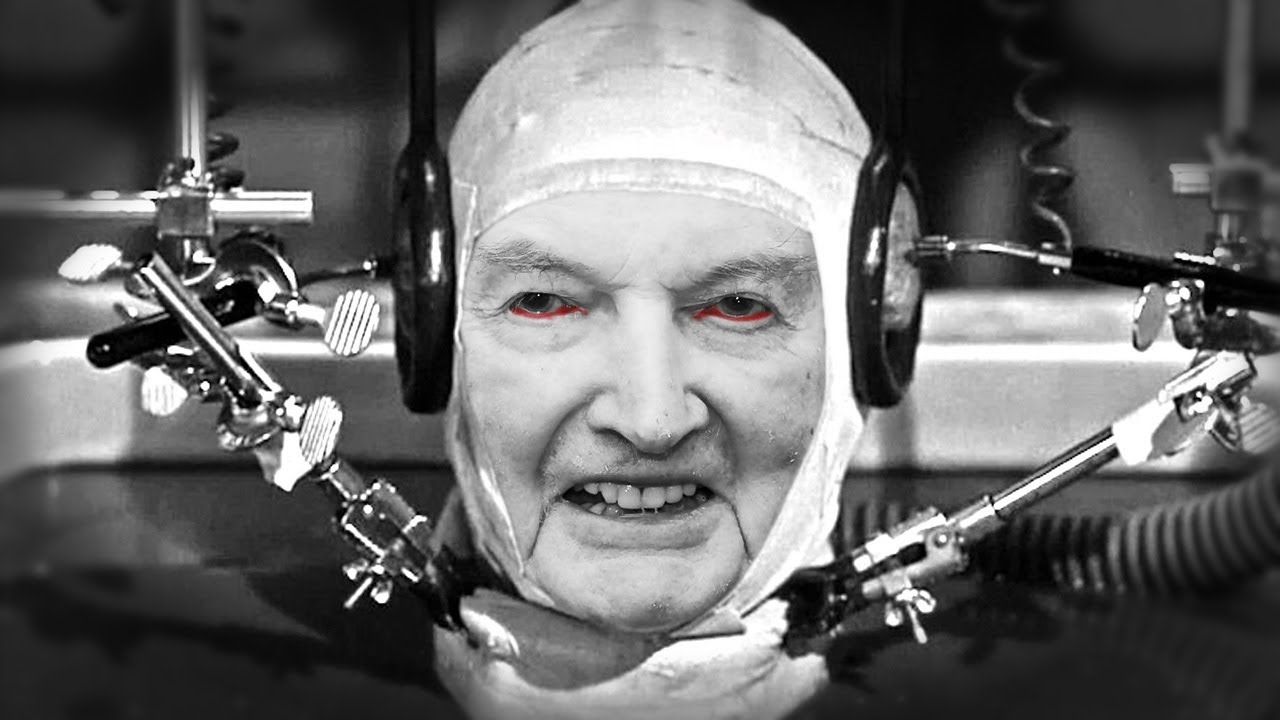Scientists have built an algae that spits out more than twice as much fat as wild algae.
Space-based solar power has had a slow start, but the technology may finally take off in the next few decades. Since its inception, solar power has had a severe limitation as a renewable energy: it only works when the Sun is shining. This has restricted the areas where solar panels can be effectively used to sunnier, drier regions, such as California and Arizona. And even on cloudless days, the atmosphere itself absorbs some of the energy emitted by the Sun, cutting back the efficiency of solar energy. And let’s not forget that, even in the best of circumstances, Earth-bound solar panels are pointed away from the Sun half of the time, during the night.
So, for over half a decade, researchers from NASA and the Pentagon have dreamed of ways for solar panels to rise above these difficulties, and have come up with some plausible solutions. There have been several proposals for making extra-atmospheric solar panels a reality, many of which call for a spacecraft equipped with an array of mirrors to reflect sunlight into a power-conversion device. The collected energy could be beamed to Earth via a laser or microwave emitter. There are even ways to modulate the waves’ energy to protect any birds or planes that might wander into the beam’s path.
The energy from these space-based solar panels would not be limited by clouds, the atmosphere, or our night cycle. Additionally, because solar energy would be continuously absorbed, there would be no reason to store the energy for later use, a process which can cost up to 50 percent of the energy stored.
Excellent lightning round questions below the audio. Between Dune and Hitchhikers Guide, Liz is indeed a nerd.
In this episode we talk about aging. It’s a condition that everyone experiences and indeed, one thing is certain: when it comes to aging, our condition is terminal. Our guest today is challenging that and fighting aging head on. We’re speaking with Liz Parrish, the CEO of BioViva, a biotech company dedicated to advancing gene and cell therapies to treat the diseases of aging. We dive into her work and learn about the results of the treatment that she received to slow and maybe even reverse the effects of aging.
Liz is a passionate advocate for patient access to these revolutionary treatments, and a couple years ago, Liz decided to take her own medicine – literally. In September 2015, Liz underwent genetic therapy with the aim of slowing and even reversing the effects of aging. She believes that aging should be classified as a disease to open up entirely new and untapped pathways to extend human lives and allow us to be healthier, longer.
Deep learning has transformed the field of artificial intelligence, but the limitations of conventional computer hardware are already hindering progress. Researchers at MIT think their new “nanophotonic” processor could be the answer by carrying out deep learning at the speed of light.
In the 1980s, scientists and engineers hailed optical computing as the next great revolution in information technology, but it turned out that bulky components like fiber optic cables and lenses didn’t make for particularly robust or compact computers.
In particular, they found it extremely challenging to make scalable optical logic gates, and therefore impractical to make general optical computers, according to MIT physics post-doc Yichen Shen. One thing light is good at, though, is multiplying matrices—arrays of numbers arranged in columns and rows. You can actually mathematically explain the way a lens acts on a beam of light in terms of matrix multiplications.
Researchers at the Scripps Research Institute Florida campus have refined the already state-of-the-art gene-editing system CRISPR. The new improvements boost the ability of CRISPR to target, cut and paste genes in human and animal cells and helps to address the concerns of off target gene mutations raised in a recent study [1].
What is CRISPR?
CRISPR is short for “Clustered Regularly Interspaced Short Palindromic Repeat,” and is a gene editing system that exploits an ancient bacterial immune defense process. Some microbes combat viral infection by sequestering a piece of a virus’ foreign genetic material within its own DNA, to serve as a template. The next time the viral sequence is encountered by the microbe, it is detected immediately and cut up for disposal with the help of two types of RNA. Molecules called guide RNAs show the location of the invader, and the CRISPR effector proteins act as the scissors that cut it apart and destroy it.
A conspiracy theory article that I think is spreading semi-fake news (but it’s interesting to see how some people react to #transhumanism):
While the title of this article may sound like it belongs on a strange and dark science fiction movie, it doesn’t. Unfortunately, it seems that as the technological world continues to advance, the more the old adage ‘the truth is stranger than fiction’ becomes true.
Throughout the past year or so, we have heard Google’s leading futurist tell us that it will one day be possible to live forever. His belief is that it will start with nanobots in the human body which would work to defeat deadly disease, in place of our immune system. Kurzweil maintains that the human immune system is inadequate and that,
An article discussing why extreme risk aversion deriving from indefinite lifespans is neither very likely, nor rational.
There’s a theory suggesting that, if we could live indefinitely, we might become extremely risk-averse. Presently, regardless of when you die, you ‘only’ lose a handful of decades of life at worst, because you would have died of old age eventually anyway. However, the reasoning goes, if you could live for an indefinitely long time, your untimely death would cost you no less than eternity; the conclusion is that, in order to avoid such an unimaginable loss, people wouldn’t dare taking even the most insignificant risks, such as crossing the street, ultimately making their own lives quite miserable.
The problem with this argument is that it hinges on a flawed assumption. The assumption is that we dare taking any risks at all only because we know that in a few decades at best we’re going to be dead anyway. Why do you take a plane for a holiday at the Antipodes? Because you’re going to die anyway when you’re old. Why do you go on a rollercoaster ride? Because the reaper would get you sooner or later anyway. Why do you go out without an umbrella even though it looks like it might rain? Because pneumonia would cut your life only a few decades shorter. Note that this argument also answers the age-old question, ‘Why did the chicken cross the street?’ Because YOLO.
This is not how smart people (or chickens) think. The question is one of magnitude of benefits and risks of a certain course of action. Consider the case of John, 40 years old, taking a plane from New York to Madrid for a two-week holiday. There is a chance the plane might fall into the Atlantic Ocean during the flight, in which case John would die. The chance isn’t very big, but it’s not zero nonetheless. If the plane doesn’t fall, then John gets his holiday (the benefits); however, if the plane falls, not only does John not get his holiday, but he also loses his life. At age 40, John isn’t exactly a youngster any more, but he does have some 40 years of life left, though. While the perceived value of the holiday and the remaining 40 years of life are subjective, it is quite reasonable to say that two weeks in Madrid aren’t worth losing 40 years of life.
For decades, space exploration and experimentation has been the playground for world governments and wealthy academics. Exposure to space was limited to sci-fi, the odd government broadcast, and conspiracy theories. Normal people could only buy their loved ones stars or plots of cosmic land as a sentimental gift.
